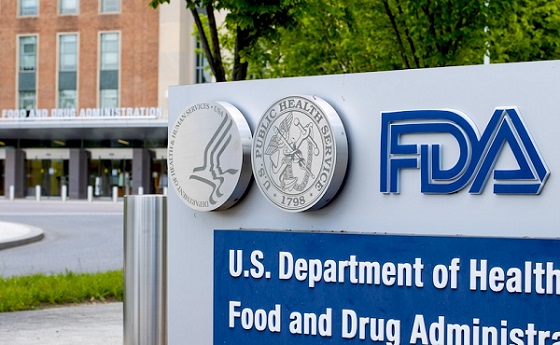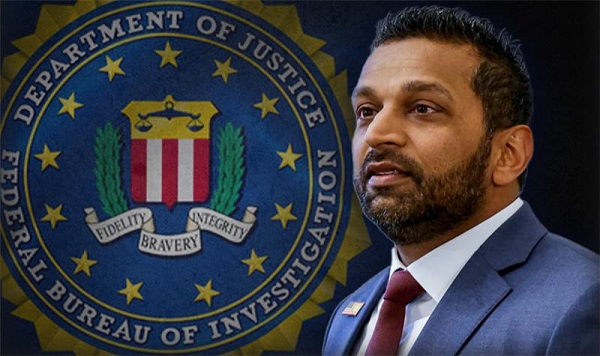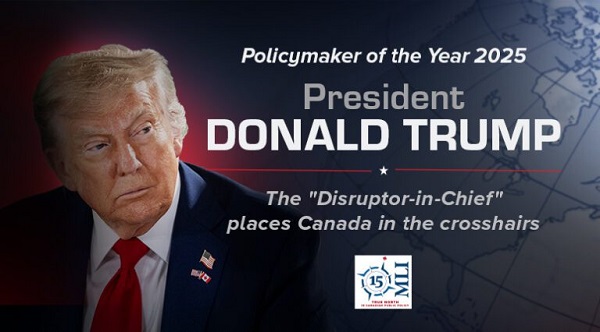Health
Trump says he wants RFK Jr. to investigate potential link between childhood vaccines, autism

From LifeSiteNews
‘Well, if you take a look at autism, go back 20 years: Autism was almost nonexistent, it was one out of 100,000. And now it’s close to one out of 100. I mean, what’s happening?’ the president-elect asked.
President-elect Donald Trump told NBC’s Meet the Press that his pick to head the Department of Health and Human Services (HHS), Robert F. Kennedy Jr., will look into potential links between childhood vaccines and autism.
During the Sunday Morning interview with Kristen Welker — which one conservative commentator characterized as “an absolute masterclass” in dealing with hostile corporate journalists — Trump defended RFK Jr.’s quest to investigate the vaccines/autism link as Welker repeatedly insisted that no link exists.
Welker desperately wanted to coax Trump into saying that he’s outright opposed to childhood vaccines, but Trump repeatedly sidestepped her statements, serving up sound judgment for her listeners instead.
Trump would only say that if certain vaccines are shown to be “dangerous for children” they should be eliminated.
“When you look at some of the problems, when you look at what’s going on with disease and sickness in our country, something’s wrong,” Trump emphasized.
“Are you talking about autism?” Welker asked.
“Well, if you take a look at autism, go back 20 years: Autism was almost nonexistent, it was one out of 100,000. And now it’s close to one out of 100. I mean, what’s happening?” he asked.
When Welker insisted that studies have shown that there is no link between vaccines and autism, Trump allowed that “Maybe it’s not vaccines, maybe it’s chlorine in the water … I want them to look at everything.”
“Certain vaccines are incredible,” Trump said. “But maybe some aren’t, and if they aren’t, we have to find out.”
“When you talk about autism, and you look at the amount we have today versus 20 or 25 years ago, it’s pretty scary,” he declared.
RFK Jr. is known for vehemently opposing vaccines, a stance he adopted after the mothers of vaccine-injured children implored him to look into the research linking thimerosal to neurological injuries, including autism. He went on to found Children’s Health Defense, an organization with the stated mission of “ending childhood health epidemics by eliminating toxic exposure,” largely through vaccines.
Kennedy said in October that Trump had asked him to reorganize and “clean up” federal health agencies like the CDC and FDA. This would involve ending conflicts of interest that favor the interests of pharmaceutical companies over evidence-based medicine, according to Kennedy.
He further shared that Trump had tasked him with ending “the chronic disease epidemic in this country,” especially chronic disease among children.
The future head of HHS recently described the unholy alliance between government health agencies and pharmaceutical companies. He explained how lucrative government-mandated children’s vaccines have been for the pharmaceutical industry:
There’s no downstream liability, there’s no front-end safety testing – that saves them a quarter billion dollars – and there’s no marketing and advertising costs, because the federal government is ordering 78 million school kids to take that vaccine every year.
What better product could you have? And so there was a gold rush to add all these new vaccines to the schedule that we don’t need. Most of these vaccines are unnecessary. Many of them are for diseases that are not even casually contagious.
It was a gold rush, because if you get onto that schedule, it’s a billion dollars a year for your company.
And in many cases, NIH is earning the royalties.
According to Kennedy, more obscene than the huge profits being horded by Big Pharma are the vast number of negative side effects from all those untested vaccines.
“Neurological diseases” have “exploded,” he said.
“ADHD, sleep disorders, language delays, ASD, autism, Tourette’s syndrome, ticks, narcolepsy. These are all things that I never heard of,” Kennedy said. “Autism went from one in 10,000 in my generation according to CDC data to one in every 34 kids today.”
RFK Jr. as future head of HHS scares Nobel laureates and The New York Times
Meanwhile, 77 Nobel laureates signed a letter urging the Senate to oppose Kennedy’s confirmation as head of HHS.
Thee New York Times described Kennedy as “a staunch critic of mainstream medicine” who “has been hostile to the scientists and agencies he would oversee.”
To many Americans, those are the perfect qualifications for the next head of HHS.
The laureates wrote:
The proposal to place Mr. Kennedy in charge of the federal agencies responsible for protecting the health of American citizens and for conducting the medical research that benefits our country and the rest of humanity has been widely criticized on multiple grounds. In addition to his lack of credentials or relevant experience in medicine, science, public health, or administration, Mr. Kennedy has been an opponent of many health-protecting and life-saving vaccines, such as those that prevent measles and polio; a critic of the well-established positive effects of fluoridation of drinking water; a promoter of conspiracy theories about remarkably successful treatments for AIDS and other diseases; and a belligerent critic of respected agencies (especially the Food and Drug Administration, the Centers for Disease Control, and the National Institutes of Health).
The leader of DHHS should continue to nurture and improve — not threaten — these important and highly respected institutions and their employees.
In view of his record, placing Mr. Kennedy in charge of DHHS would put the public’s health in jeopardy and undermine America’s global leadership in the health sciences, in both the public and commercial sectors.
It’s no surprise that those sitting atop the Big Pharma/Big Government/Academia industrial complex are displaying concern if not sheer desperation over Kennedy’s future role as head of HHS.
In October, Kennedy issued a warning on X:
FDA’s war on public health is about to end … If you work for the FDA and are part of this corrupt system, I have two messages for you: 1. Preserve your records, and 2. Pack your bags.
Public support for Kennedy’s quest is evident in the post having received nearly 7 million views and garnering 149,000 “Likes.”
Alberta
A Christmas wish list for health-care reform

From the Fraser Institute
By Nadeem Esmail and Mackenzie Moir
It’s an exciting time in Canadian health-care policy. But even the slew of new reforms in Alberta only go part of the way to using all the policy tools employed by high performing universal health-care systems.
For 2026, for the sake of Canadian patients, let’s hope Alberta stays the path on changes to how hospitals are paid and allowing some private purchases of health care, and that other provinces start to catch up.
While Alberta’s new reforms were welcome news this year, it’s clear Canada’s health-care system continued to struggle. Canadians were reminded by our annual comparison of health care systems that they pay for one of the developed world’s most expensive universal health-care systems, yet have some of the fewest physicians and hospital beds, while waiting in some of the longest queues.
And speaking of queues, wait times across Canada for non-emergency care reached the second-highest level ever measured at 28.6 weeks from general practitioner referral to actual treatment. That’s more than triple the wait of the early 1990s despite decades of government promises and spending commitments. Other work found that at least 23,746 patients died while waiting for care, and nearly 1.3 million Canadians left our overcrowded emergency rooms without being treated.
At least one province has shown a genuine willingness to do something about these problems.
The Smith government in Alberta announced early in the year that it would move towards paying hospitals per-patient treated as opposed to a fixed annual budget, a policy approach that Quebec has been working on for years. Albertans will also soon be able purchase, at least in a limited way, some diagnostic and surgical services for themselves, which is again already possible in Quebec. Alberta has also gone a step further by allowing physicians to work in both public and private settings.
While controversial in Canada, these approaches simply mirror what is being done in all of the developed world’s top-performing universal health-care systems. Australia, the Netherlands, Germany and Switzerland all pay their hospitals per patient treated, and allow patients the opportunity to purchase care privately if they wish. They all also have better and faster universally accessible health care than Canada’s provinces provide, while spending a little more (Switzerland) or less (Australia, Germany, the Netherlands) than we do.
While these reforms are clearly a step in the right direction, there’s more to be done.
Even if we include Alberta’s reforms, these countries still do some very important things differently.
Critically, all of these countries expect patients to pay a small amount for their universally accessible services. The reasoning is straightforward: we all spend our own money more carefully than we spend someone else’s, and patients will make more informed decisions about when and where it’s best to access the health-care system when they have to pay a little out of pocket.
The evidence around this policy is clear—with appropriate safeguards to protect the very ill and exemptions for lower-income and other vulnerable populations, the demand for outpatient healthcare services falls, reducing delays and freeing up resources for others.
Charging patients even small amounts for care would of course violate the Canada Health Act, but it would also emulate the approach of 100 per cent of the developed world’s top-performing health-care systems. In this case, violating outdated federal policy means better universal health care for Canadians.
These top-performing countries also see the private sector and innovative entrepreneurs as partners in delivering universal health care. A relationship that is far different from the limited individual contracts some provinces have with private clinics and surgical centres to provide care in Canada. In these other countries, even full-service hospitals are operated by private providers. Importantly, partnering with innovative private providers, even hospitals, to deliver universal health care does not violate the Canada Health Act.
So, while Alberta has made strides this past year moving towards the well-established higher performance policy approach followed elsewhere, the Smith government remains at least a couple steps short of truly adopting a more Australian or European approach for health care. And other provinces have yet to even get to where Alberta will soon be.
Let’s hope in 2026 that Alberta keeps moving towards a truly world class universal health-care experience for patients, and that the other provinces catch up.
Health
FDA warns ‘breast binder’ manufacturers to stop marketing to gender-confused girls

From LifeSiteNews
Dr. Marty Makary took aim at the transgender-medical-industrial complex that has exploded in recent years during a recent press conference.
Food and Drug Administration (FDA) commissioner Dr. Marty Makary has sternly warned companies manufacturing “breast binders” to cease marketing and supplying their product to gender-confused girls seeking to make their bodies appear masculine.
“Today the FDA is taking action,” said Makary in a press conference. “We are sending warning letters to 12 manufacturers and retailers for illegal marketing of breast binders for children, for the purposes of treating gender dysphoria.”
“Breast binders are a class one medical device with legitimate medical users, such as being used by women after breast cancer surgery,” but “these binders are not benign,” he cautioned. “Long-term usage has been associated with pain, compromised lung function, and even difficulty breast feeding later in life.”
“The warning letters will formally notify the companies of their significant regulatory violations and require prompt corrective action,” said the FDA head.
.@DrMakaryFDA: “Today the FDA is taking action. We are sending warning letters to 12 manufacturers and retailers for illegal marketing of breast binders for children, for the purposes of treating gender dysphoria.” pic.twitter.com/6JNAy36223
— HHS Rapid Response (@HHSResponse) December 18, 2025
The warning letter addressed to California manufacturer, GenderBender, notes that the company’s website states that “[c]hest binding is the practice of compressing breast mass into a more masculine shape, often done in the LGBTQ community for gender euphoria.”
“Your firm should take prompt action to address any violations identified in this letter. Failure to adequately address this matter may result in regulatory action being initiated by the FDA without further notice. These actions include, but are not limited to, seizure and injunction,” advised the FDA.
During his presentation, Makary took aim at the transgender-medical-industrial complex that has exploded in recent years.
“One of the most barbaric features of a society is the genital mutilation of its children,” observed Makary.
“Pushing transgender ideology in children is predatory, it’s wrong, and it needs to stop,” he declared.
“This ideology is a belief system that some teachers, some pediatricians, and others are selling to children without their parents knowing sometimes, or with a deliberate attempt to remove parents from the decision making,” Makary explained.
To witness society “putting kids on a path of chest binders, drugs, castration, mastectomies, and other procedures is a path that now many kids regret,” he lamented, as he pointed to Chloe Cole, who has reverted to her God-given femininity after undergoing so-called “gender-affirming” surgery as a teen.
Cole is a leading voice for young people who have “detransitioned” after having medically, surgically, and socially attempted to “transition” to a member of the opposite sex.
.@DrMakaryFDA: “Pushing transgender ideology in children is predatory, it's wrong, and it needs to stop.” pic.twitter.com/TXxWNEtNZk
— HHS Rapid Response (@HHSResponse) December 18, 2025
-

 Haultain Research1 day ago
Haultain Research1 day agoSweden Fixed What Canada Won’t Even Name
-

 Censorship Industrial Complex2 days ago
Censorship Industrial Complex2 days agoUS Under Secretary of State Slams UK and EU Over Online Speech Regulation, Announces Release of Files on Past Censorship Efforts
-

 Business1 day ago
Business1 day agoWhat Do Loyalty Rewards Programs Cost Us?
-

 Business13 hours ago
Business13 hours agoLand use will be British Columbia’s biggest issue in 2026
-

 Energy14 hours ago
Energy14 hours agoWhy Japan wants Western Canadian LNG
-

 Business11 hours ago
Business11 hours agoMainstream media missing in action as YouTuber blows lid off massive taxpayer fraud
-

 Business10 hours ago
Business10 hours agoStripped and shipped: Patel pushes denaturalization, deportation in Minnesota fraud
-

 Energy2 hours ago
Energy2 hours agoRulings could affect energy prices everywhere: Climate activists v. the energy industry in 2026








